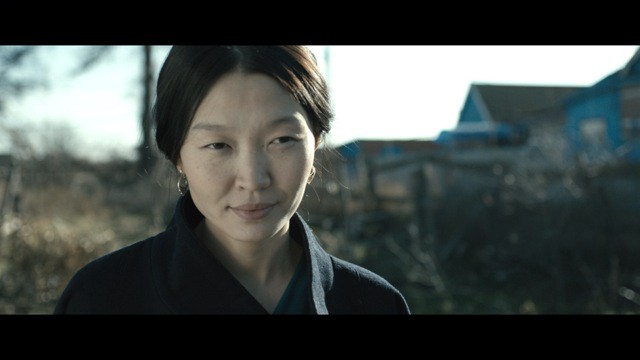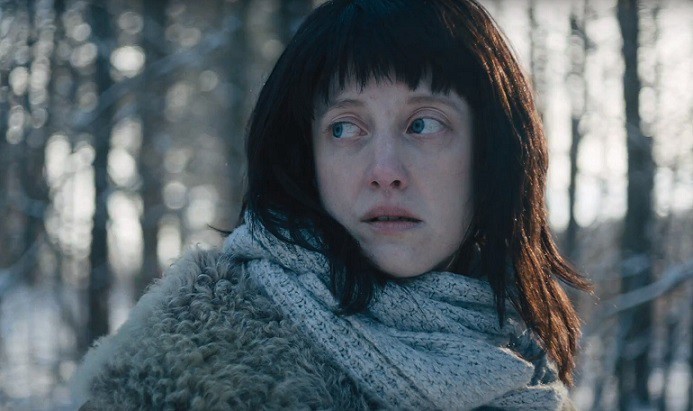Director Ella Manzheeva graduated from the St. Petersburg State University of Film and Television in 2005, specializing in TV and film sound engineering. In 2007, she enrolled at the Higher Courses for Scriptwriters and Directors, working under the tutelage of renowned director Vladimir Khotinenko.
In 2012, she wrote the screenplay for The Gulls,which was published in Art of Cinema, one of Russia’s leading film journals. Her previous film, the short Within Her, There’s a Steppe, was featured in over twenty international film festivals, where it won numerous awards. Manzheeva went on to participate in the Berlinale Talent Campus #11, as well as the Kultburo Short Film Competition. The Gulls marks Manzheeva’s directorial debut. (Press materials)
The Gulls will premiere at the 2015 Berlin International Film Festival on February 6.
W&H: Please give us your description of the film playing.
EM: Elsa, a fisherman’s wife, lives in a Kalmyk seaside town. She wants to leave her husband, but doesn’t dare do so for fear of the unknown. However, circumstances lead to the death of Elsa’s husband. This sudden death forces the heroine to reflect and reconsider her views on life, happiness, and freedom.
W&H: What drew you to this story?
EM: When I was writing the script, I did not understand how I knew all of my characters so precisely. Only later on, when filming had ended, different — real — stories began to rise up in my mind. They had all been mixed up so tightly that they, unknowingly, became the basis for my film. When I was sixteen, there had been a guy who liked me. He was my brother-in-law. His brother forbade him to chase after me, because of superstition. It’s a bad sign to enter the same family twice. So, the guy obeyed.
A few years later, we found out that he had died. He went to sea after the fishing season was over, and he was not able to return in time. The sea had frozen over, and his boat was wrecked in the ice, just as is the case with the film’s main character Dzhiga. He left behind his wife and two children. Quite often, I think that it could have been me [who was left behind].
Every time I imagined their relationship, their tragedy, I found more pieces to complete their picture. Finally, on the basis of these thoughts and long discussions about them, I got the entire visual of this family. Later on, I realized that everything I had imagined was probably not connected with the reality.
W&H: What was the biggest challenge in making the film?
EM: I think the most difficult thing was to get along with the local people. It was a conflict of mentalities. It was not easy to gain their respect. And, for us, it was hard to understand their [reaction to us]. I can understand both points of view. On the one hand, I am Kalmyk. On the other, it was my team that came to help me shoot this film. So I had to get them to work together.
Before we started shooting, Evgeniva Mandzhieva, who plays the main character Elsa, spent two weeks working night shifts at a local factory. No one had a clue that she was a famous top model. We had to make her look tired and less good-looking. She kept silent for the whole two-month period of shooting and no one could talk to her. The experience of being ignored helped Evgeniva express her feelings and emotions without words, only with her body language and eyes.
She was ready to be in front of the camera at any minute, but she didn’t have to act because Elsa was really her. It was incredibly difficult and interesting at the same time. She did a great job. Later, she told me that during the shooting, she felt more alive than she had ever felt.
W&H: What do you want people to think about when they are leaving the theatre?
EM: I would like for the viewers to trust themselves more — to rely on their own unique experience and character so that the film’s drama lives on in their minds and they are able to come away with their own moral lesson. I’m not trying to convey one particular message by creating this story. I simply ask a question and hope that everyone responds in their own way.
W&H: What advice do you have for other female directors?
EM: Forget that you are a woman. Gender never defines professional qualities. But never forget your femininity. It can help you feel a unique power to create your own special world in the movie.
W&H: How did you get your film funded? Share some insights into how you got the film made.
EM: Our film was funded by the Ministry of Culture of the Russian Federation. We won a grant for a debut film. After my script was published in one of the leading film journals (Cinema Art) and we shot a teaser for the script, we presented the final project at the pitching session of the Kinotayr Film Festival. Our project won the main prize and garnered positive response from a wide professional audience.
It is very important for fresh new Kalmyk cinema because it is a rare situation, a project of such a small cultural group in Russia being supported by the government.
W&H: Name your favorite woman-directed film and why.
EM: Le Meraviglie (The Wonders) by Alice Rohrwacher. When I watched the film, I could not breathe. I had never experienced this feeling before. This film is totally for me. I was amazed by how she managed to express delicate relationships. It’s amazing how she can make you feel the atmosphere of memories. I felt hopeless and afraid because of the understanding that one day my child will not fit into my arms. It’s a fantastic movie. She is an extremely talented woman.







